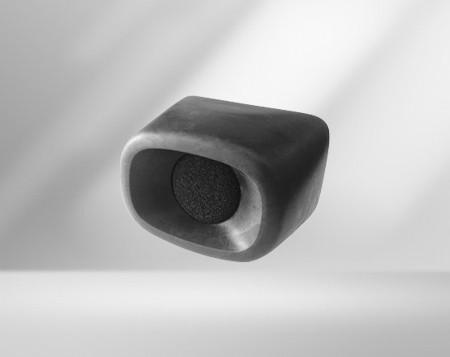source:Industry News release time:2022-04-13 Hits: Popular:Brand bar audio wholesale

The ratio of the maximum signal level to the maximum signal level that the power amplifier can amplify without distortion is the dynamic range of the amplifier. In practical applications, the ratio uses dB to represent the level difference between the two signals, and the dynamic range of the high-fidelity amplifier should be greater than 90dB. Various noises in nature form the surrounding background noise. The surrounding background noise and the sound intensity of the performance are very different. In general, this difference in intensity is called the dynamic range. A good sound system should not produce overload distortion when a strong signal is input, and should not be overwhelmed by its own noise when a weak signal is input. To this end, a good sound system should have a large dynamic range, and the noise can only be reduced as much as possible, but it must not produce noise.
Sensitivity:
When a signal is input to the power amplifier, when the strength of the input signal reaches a certain voltage value, the input power of the power amplifier reaches the designed rated output power value, and the voltage value of the input signal at this time is the input sensitivity voltage value of the power amplifier. Then the power amplifier sensitivity voltage selection is to let you choose whether the power amplifier will output full power when the voltage value of the input signal reaches 0.775v, or when it reaches 1.0v or 1.4v. The smaller the value selected for the sensitivity voltage value (such as 0.775v), the higher the sensitivity of the power amplifier, and the larger output can be achieved only by inputting a relatively small signal. High-sensitivity (small value) power amplifier, high power amplifier voltage amplification, low requirements for the driving ability of front-end equipment, relatively low signal-to-noise ratio, and relatively large distortion. The opposite is true for low-sensitivity amplifiers.
Signal to Noise Ratio:
Refers to the ratio of the signal level to the various noise levels output by the power amplifier, expressed in db, the larger the value, the better. If the signal-to-noise ratio is too low, the small signal input noise is serious, and the sound in the entire sound range becomes obviously turbid and unclear, and it is unknown what sound is issued, which seriously affects the sound quality.
Output Impedance:
The equivalent internal impedance exhibited by the output end of the power amplifier and the load (speaker) is called the output impedance of the power amplifier. The smaller this value is, the stronger the load capacity of the power amplifier is.
Damping coefficient:
The damping coefficient refers to the load impedance of the power amplifier (the internal resistance of the high-power tube plus the wiring resistance of the audio). Generally, the ratio is required to be relatively large, but not too large. If it is too large, the speaker will sound thin, and if it is too small, the sound will be turbid, the sound level will be poor, and the sound image distribution will be poor.
Conversion rate:
The slew rate of the power amplifier greatly affects the quality and performance of treble playback. The faster the slew rate, the better the treble sound quality, and the more accurately the fleeting high-frequency information can be captured. High-end power amplifiers can achieve a dozen to tens of V/us, and low- and mid-range power amplifiers are generally not marked. The value of this conversion rate is closely related to the design and materials used, but it should not be too high. Ultrasonic signals above 20KHz, which are inaudible to human ears, not only have no effect on improving the sound quality, but are easy to burn out the tweeter.
Popular recommendation
Resolution 4S Skeletal Bar use audio Vendor
2021-07-16Minibass 212 Bar bar sound Merchant
2021-06-09Bass Reflex Range Bar hall sound Vendor
2021-07-14Resolution 5T Touring KTV audio wholesaler
2021-07-16PSM318 DJ monitor Bar audio set Vendor
2021-07-16F1201 School audio Vendor
2021-07-16Resolution 2 School audio company
2021-07-15D80DSP Large bar sound Vendor
2021-07-26XD18I Bar speakers wholesale
2021-07-26Resolution 2 S8KTV audio Vendor
2021-07-17I8SUB Gymnasium audio Vendor
2021-07-26Resolution 18 Bar speaker Vendor
2021-07-17Sound system anti squealing skills
2022-10-18Preparation before system debugging of professional audio manufacturer!Hunan Bar Audio Vendor
2021-11-04Classification of speakers.Bar private room audio Vendor
2021-11-15Tongxiang SPACE CLUB bar audio provided by Mateng Audio
2022-11-18Debugging points of wireless microphones in KTV audio equipment
2022-05-05Sound equipment rest assured.custom baby pacifier
2023-03-10How to deal with KTV audio network failure and power amplifier failure
2021-10-12Design concept of bar acoustics
2022-11-19Types of stage sound preparation for sound knowledge
2022-11-01How to select 5.1 speakers based on data
2022-12-06Professional Audio Finland AURA AUDIO China Entertainment General Agent Mateng Audio Company
2021-12-09KTV audio debugging skills
2022-03-04